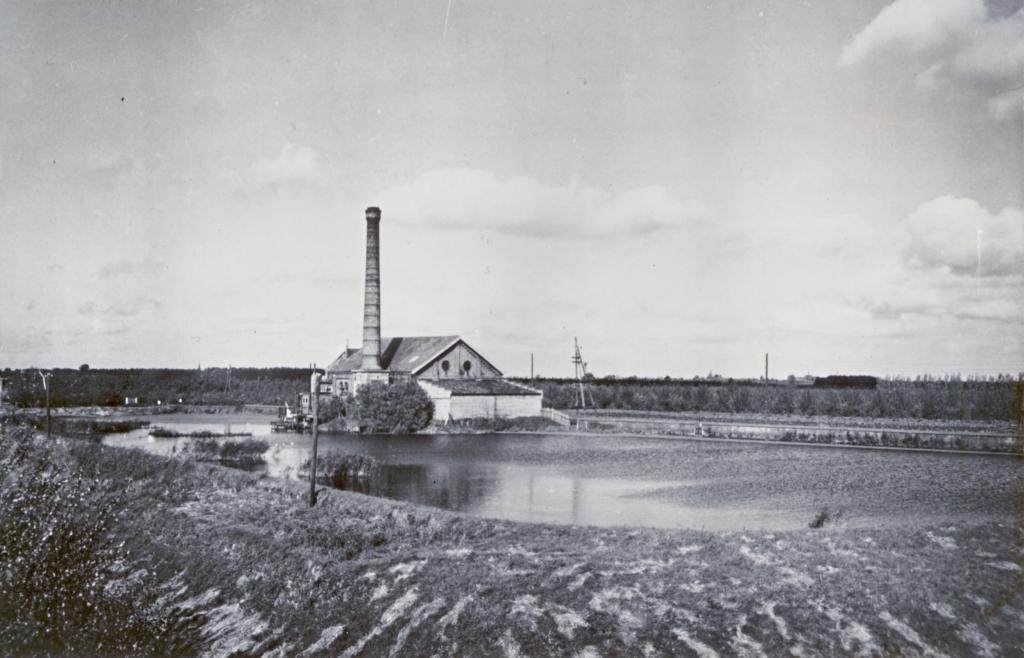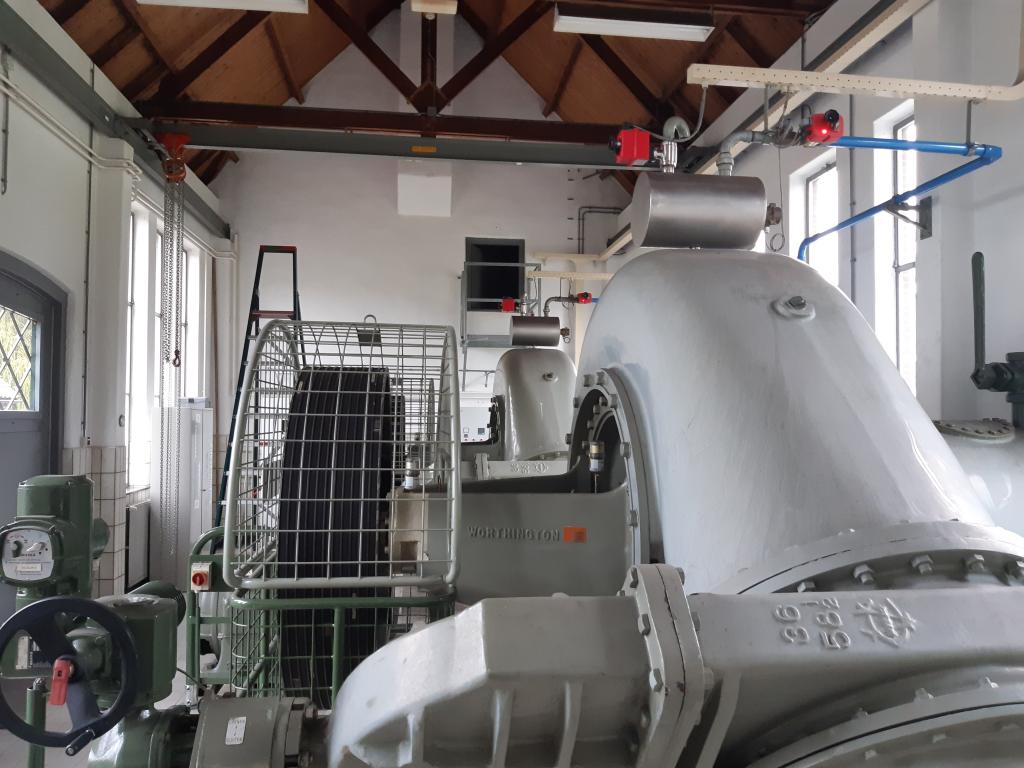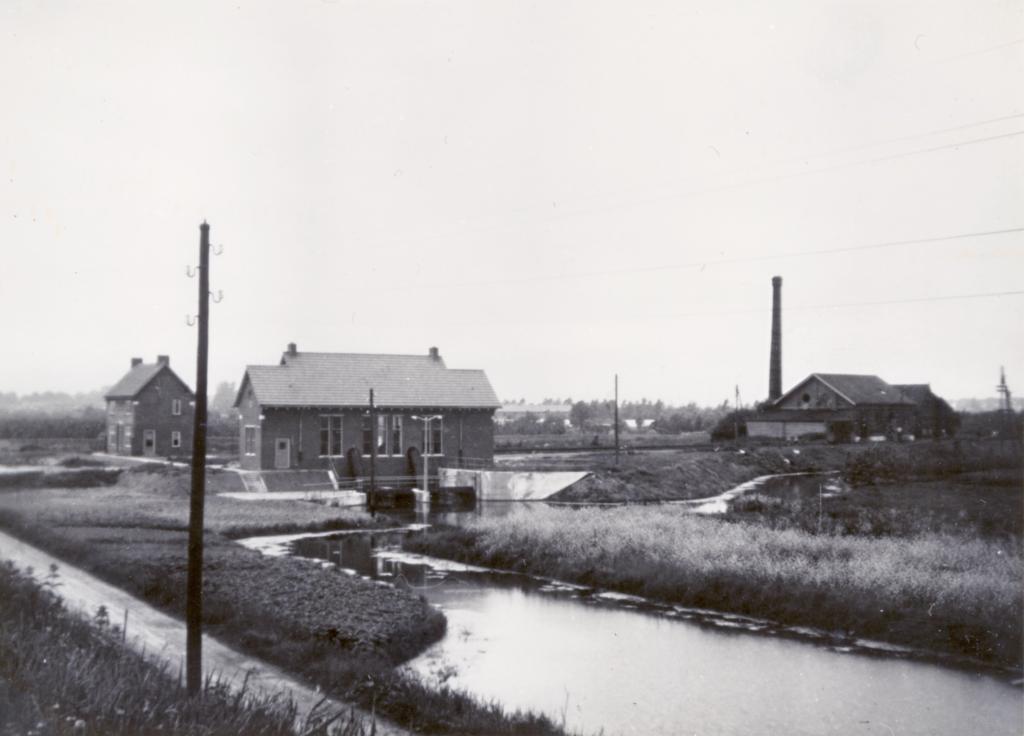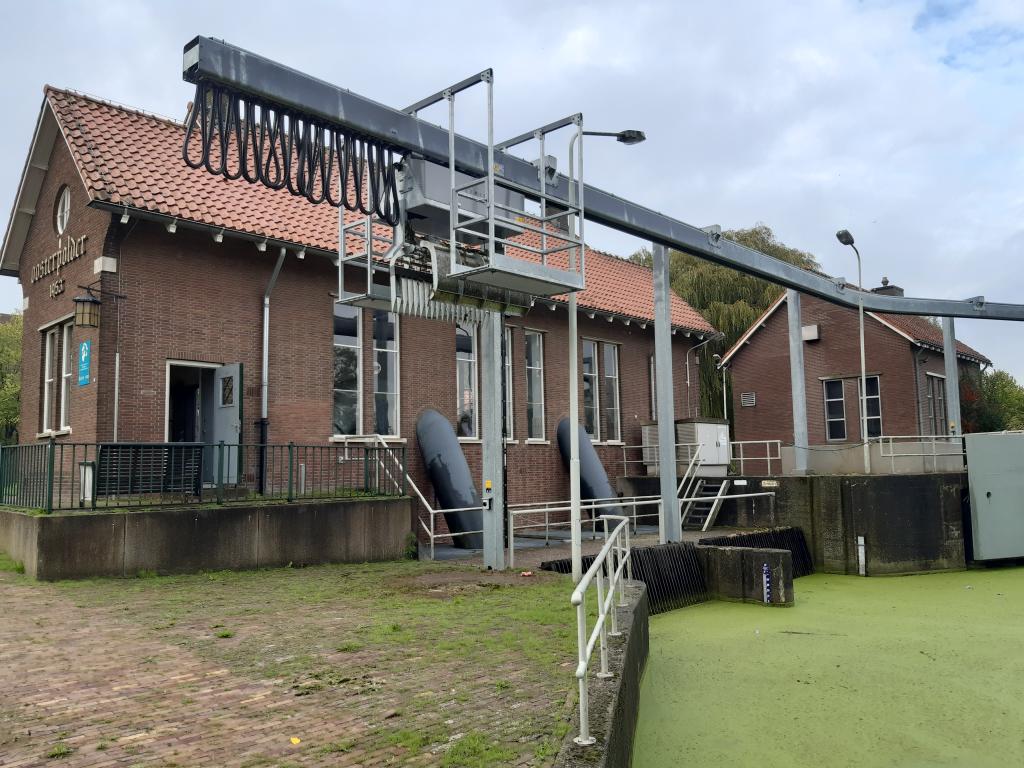Oosterpolder Pumping Station
The Oosterpolder pumping station is located at the intersection of the Holenweg and the Schellinkhouterdijk in Hoorn. The pumping station ensures that excess water from the area of the former Oosterpolder discharges into the Markermeer via outflow pipes.

Oosterpolder
In the vicinity of the Oosterpolder pumping station, water has been pumped from the Oosterpolder, consisting of the bans Hoorn (west side), Zwaag (north side) and Westerblokker (east side), to the Markermeer (then Zuiderzee) since 1483. Until 1873 this was done with three screw mills: the Middelste or Kleine Molen, the Laanmolen and the Dijkmolen.
By order of the Oosterpolder Water Board, a steam pumping station was built on the site of the Middle Mill in 1873. The three mills were subsequently demolished. The design of the steam pumping station came from the engineering firm W.C. and K. de Wit, which built a large number of steam pumping stations in North Holland. The new pumping station had a capacity of 110 cubic meters of water per minute.

New pumping station
In 1953, the steam pumping station was replaced by the current Oosterpolder electric pumping station by order of the Oosterpolder Water Board in Drechterland. This pumping station stands on the site of the Dijkmolen (dike mill). The old steam pumping station with its chimney was then demolished. The new pumping station was designed in traditionalist style by the Technical Advisory Bureau of the Union of Water Board Associations (Tauw). Buildings in this style are sober and without decoration. Typical of this movement is the use of brick and wood and the application of pitched roofs.
Marshall Aid
Two centrifugal pumps of Worthington manufacture were installed in the pumping station. This type of pump was shipped in large numbers from the U.S. to the Netherlands after World War II as part of the Marshall aid program. Both had previously been used in Zeeland. They each have a capacity of 65 cubic meters per minute at a head of 3.5 meters.

Surroundings
Associated with the pumping station is a simultaneously built service house and storage shed in reconstruction architecture. In 1975 the West Friesland Water Board had a second polder pumping station built next to the existing one. This diesel pumping station has one pump with a capacity of 130 cubic meters per minute and was necessary because of the urban expansion of Hoorn. All pumps are automated.

In 2009, as part of the dike reinforcement between Hoorn and Enkhuizen, the outlet shafts of the pumping station were extended through the West Frisian Omringdijk. In that year, the municipality of Hoorn also purchased the service house for demolition to serve a new traffic circle at the Willemsweg-Holenweg intersection. The duckweed fence at the rear was automated in 2021.

Renovation
The 1975 diesel engine served until 2021. Then it was replaced by an electric motor as the Water Board's very last diesel. The pump was also replaced and now has a capacity of 190 cubic meters per minute.
At the 1953 pumping station, the front pump will be replaced in 2023 (it replaces both pumps) with a new one with a capacity of 130 cubic meters per minute. The pump will be replaced because parts for it are still poorly available. The rear pump will remain intact, but will be decommissioned and used only during demonstrations.